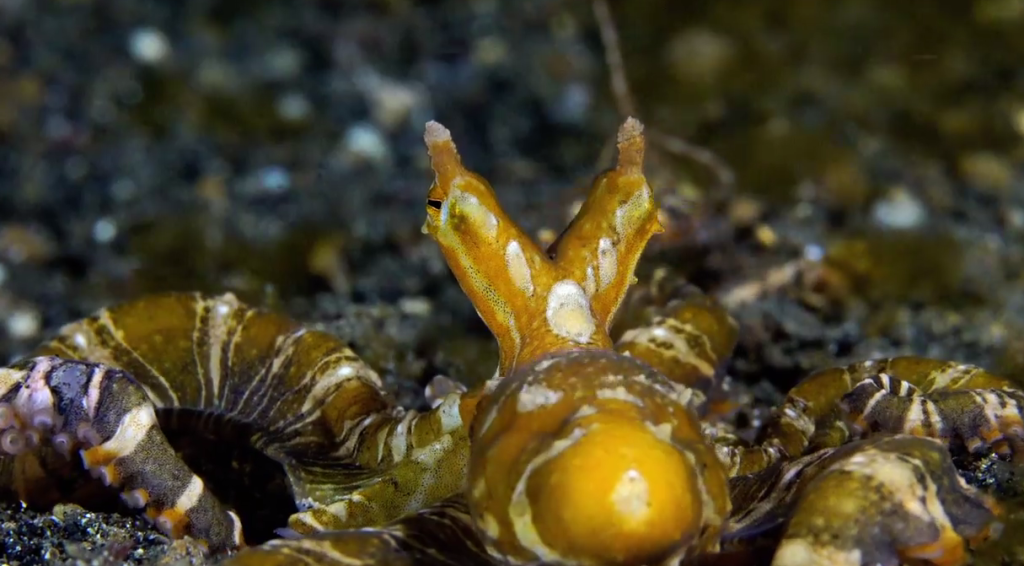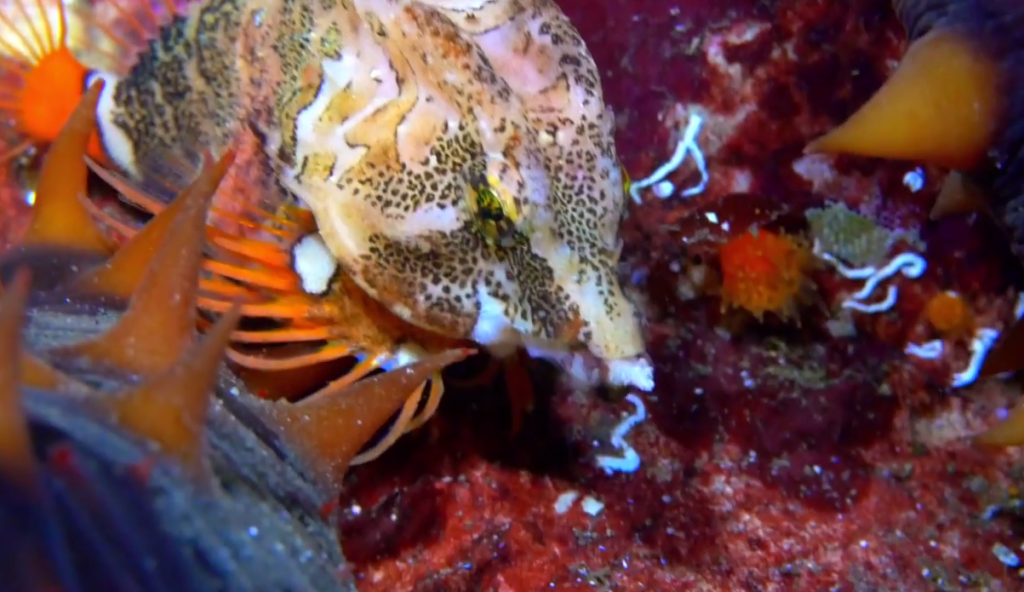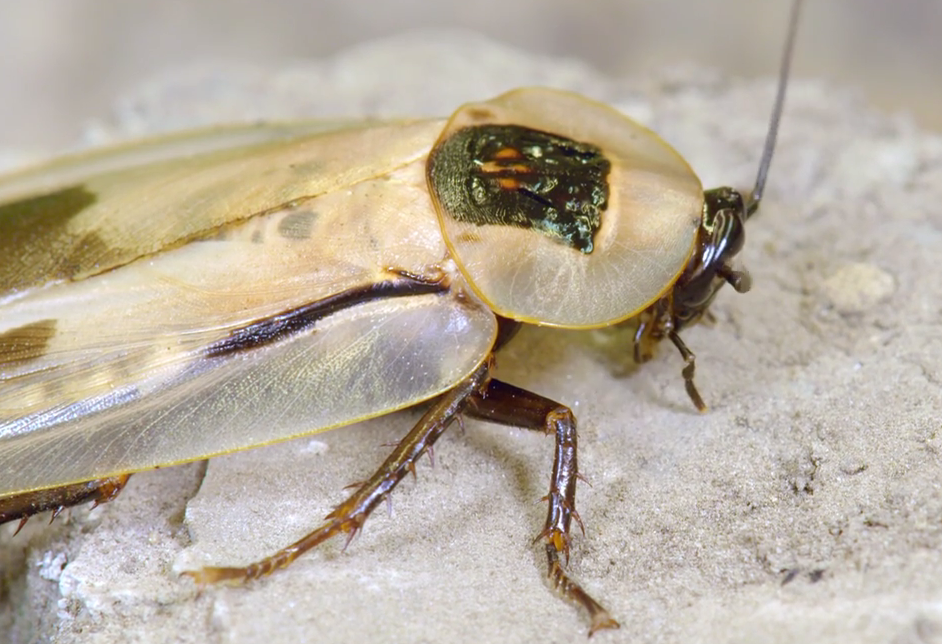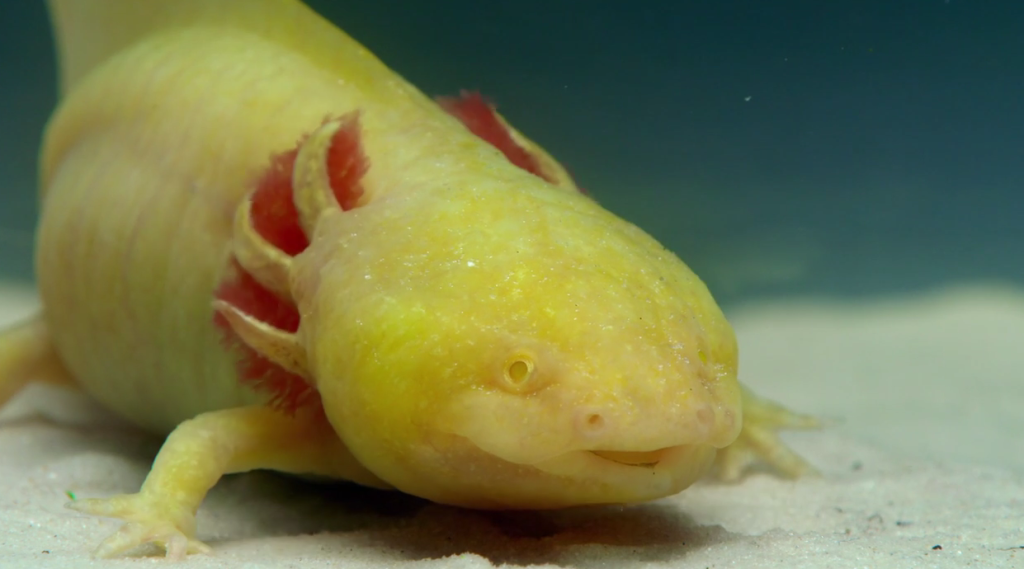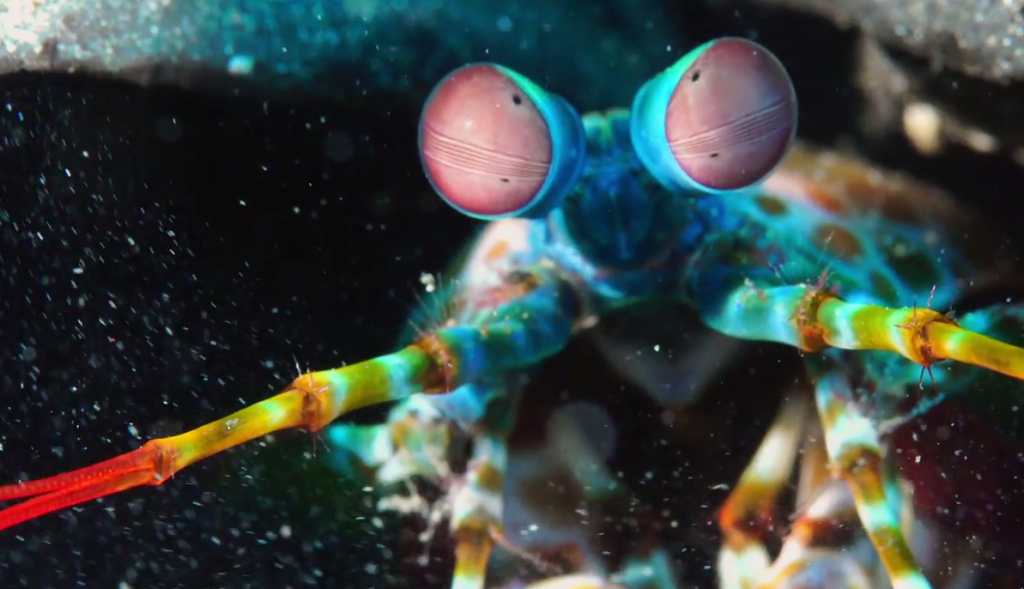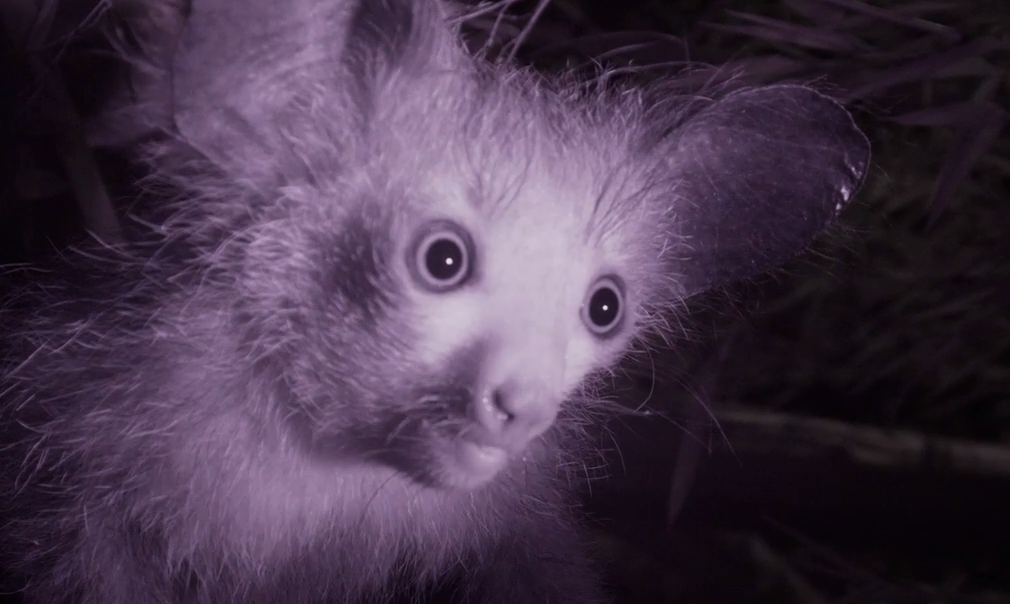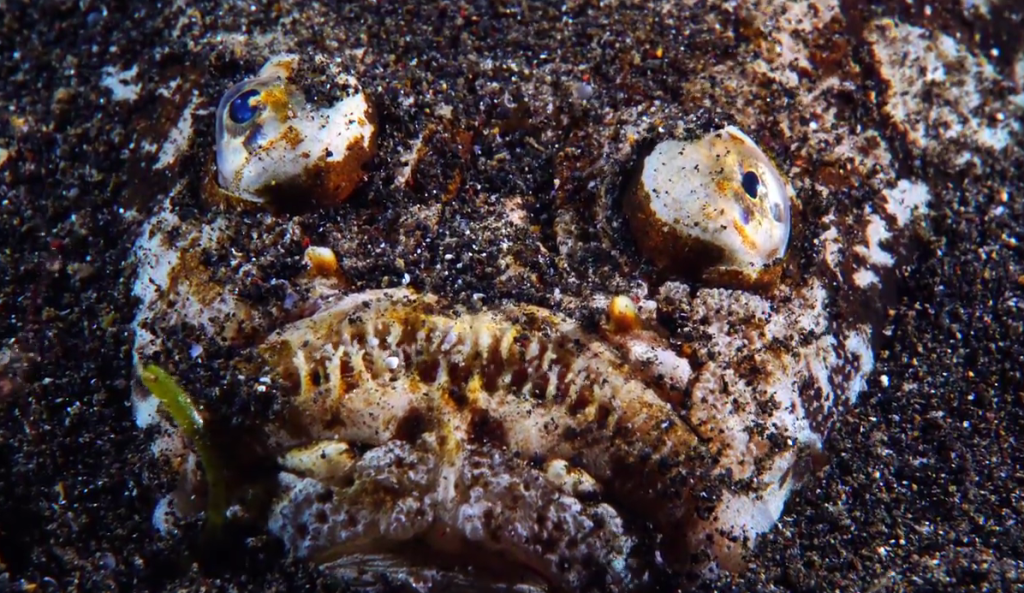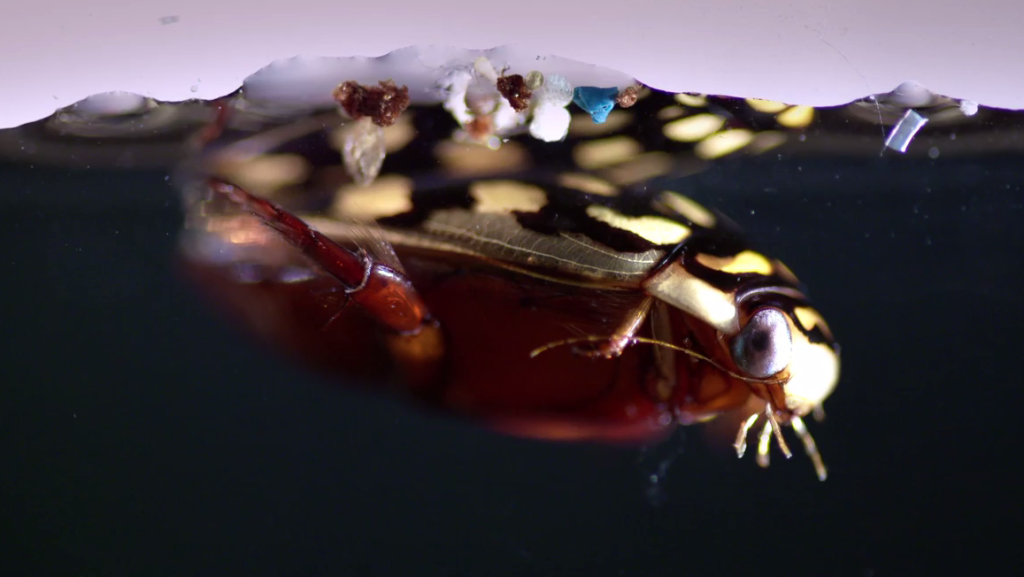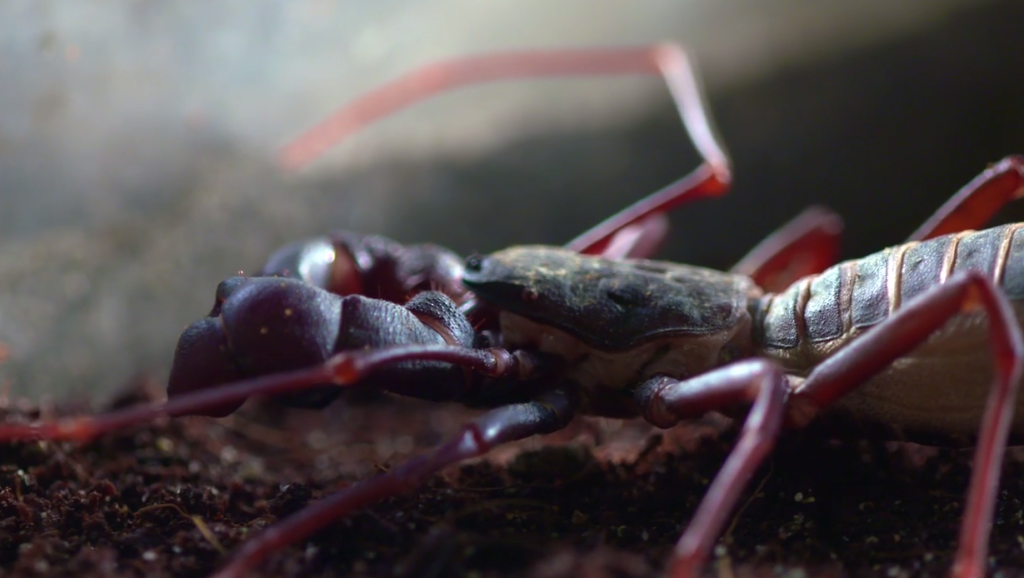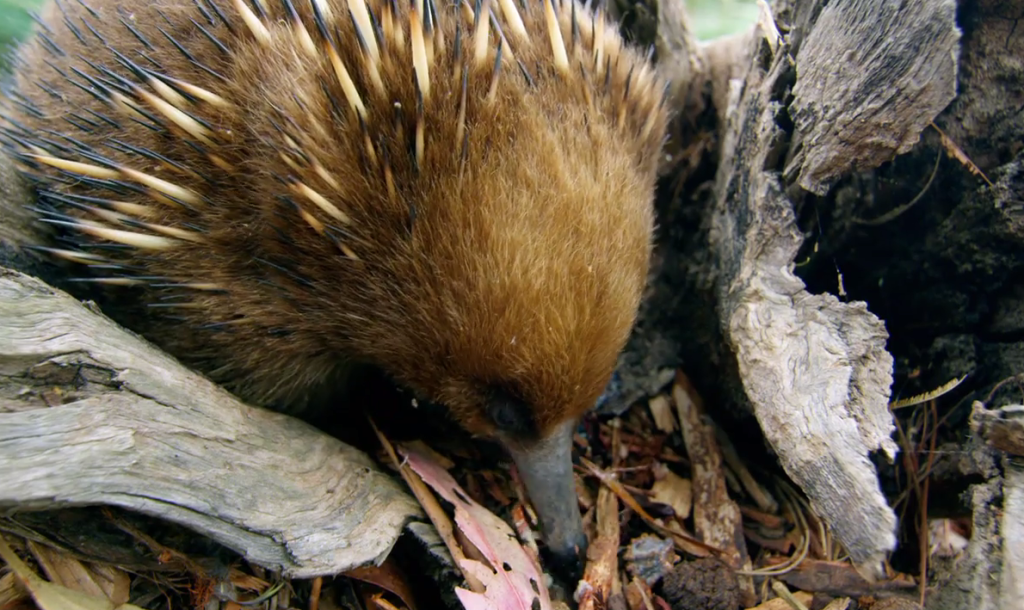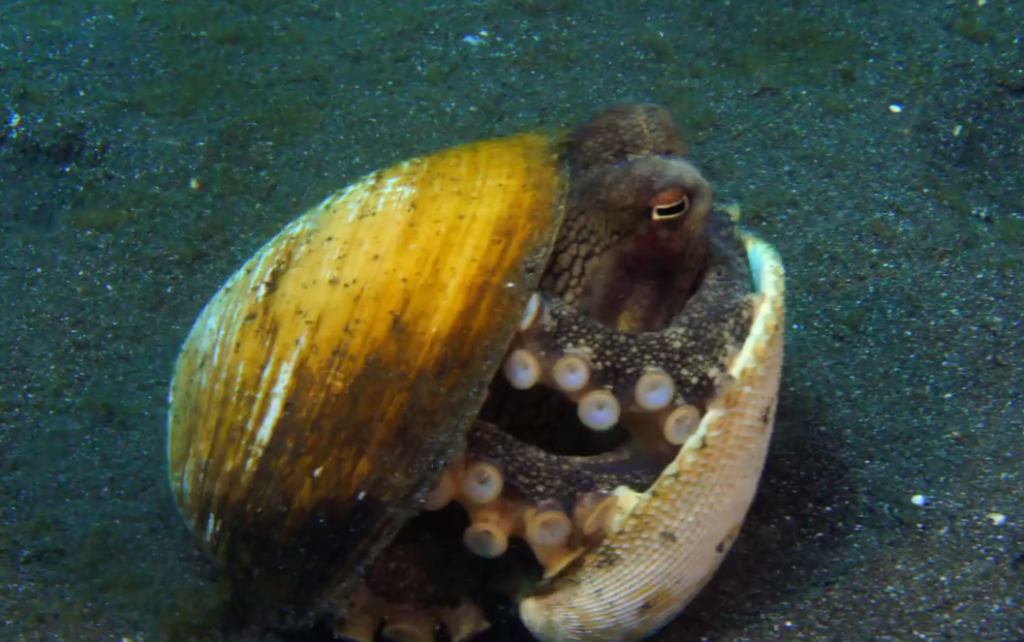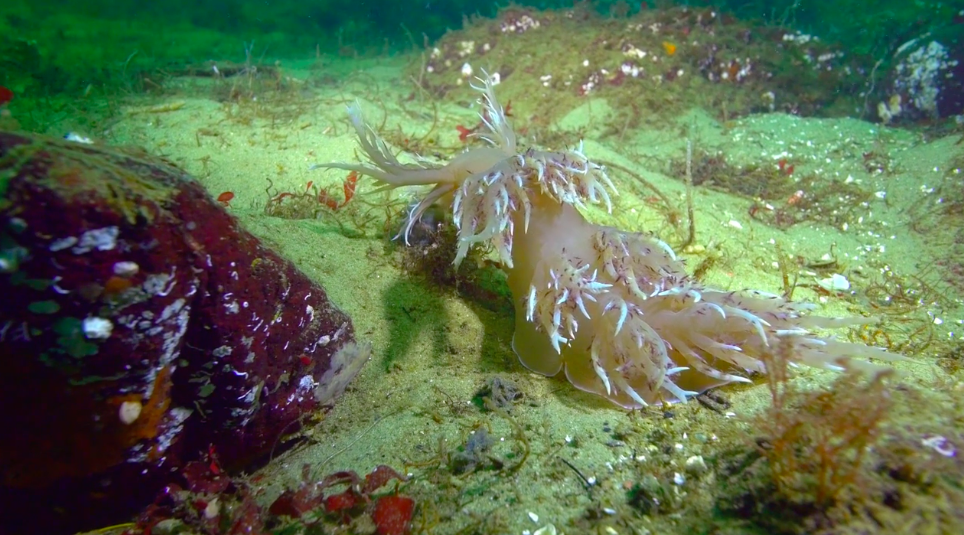Strange creatures: the wonderpus octopus
Humans have fingerprints, the elusive wonderpus octopus has white spots on its head and is distinctive to each. Also known as wunderpus photogenicus, this remarkable creature has three hearts and jet propulsion-like strength. Octupuses are great problem solvers and can even open bottles.
Strange creatures: the grunt sculpin
The grunt sculpin got its name not from how it looks, but from the sound it makes. It has a massive head that makes up half of its body size and even though it’s technically a fish, it doesn’t have scales. Rather, it has small plates which are covered in tiny spines for armour.
Strange creatures: the peacock mantis
The peacock mantis, like other mantises, can rotate its head 180 degrees because of a flexible joint between its head and thorax. This is great for hunting as is its two large compound eyes that give a wide field of vision. Its ear, on the other hand, and that’s singular, is on the underside of … Continued
Strange creatures: the stag beetle
Their bark is worse than their bite. Although the male jaws of a stag beetle can be half of its overall body length, its mostly for show. The real fight is between males of the same type when competing for a suitable dead tree or stump for females to lay eggs.
Strange creatures: stick insects
The giant stick insect may not have usable wings, a stinger, or even bite, but its special ability to disguise itself among trees and plants is unbelievable. Covered in defensive spines in case of an attack, the stick insect can curl its tail to appear as if its a scorpion and the females have a … Continued
Strange creatures: the giant cave cockroach
Unlike most invertebrates, the giant cave cockroach has a lifespan of two years. This is due to the insect’s amazing immunity, one that can fight off fungal infections by producing antibodies time and time again. This 8 cm long and 2-and-a-half cm wide creature prefers to live in colonies of about 200—and don’t worry, they’re … Continued
Strange creatures: crazy craniums
From the royal spoonbill with their spoon-shaped bills to the preening and parading Victoria crown pigeon, these distinctive birds all have peculiar and eye-catching characteristics.
Strange creatures: the axolotl
Although certain species, like lizards and spiders, can regrow parts of their bodies just the same, the axolotl can regrow certain areas that no other organism can. Cellular regeneration within brain tissue, jaws, internal organs, and parts of their spines has scientists truly amazed.
Strange creatures: the assassin bug
They weren’t given the name assassin for nothing. The assassin insect, also known as the kissing bug, includes 7,000 species and has a distinct method of hunting and killing its prey. Take care while sleeping—you don’t want a visit from this particular kissing species. But they’re not all bad; they serve some very important functions, … Continued
Strange creatures: millipedes
Giant African millipedes may look scary, but they’re really just nature’s hippies. The multi-legged night crawlers are plant lovers and are the oldest known land creatures dating back at least 420 million years. The monster-sized millipedes grow in size and in number of legs as they feed and can drop their legs if predators attack. … Continued
Strange creatures: the peacock mantis shrimp
Don’t be fooled by the peacock mantis’s stunning colouring, the bottom crawler is known to be one of the ocean’s most aggressive hunters. It was built to fight and can strike a deadly blow in a fraction of a second.
Strange creatures: the frogfish
Despite its name, the frogfish is all fish. The hairy invertebrate may prefer to blend in with its surroundings and move slowly along the ocean floor using its fins as little feet, but its bite is impressively quick. It can open its mouth, swallow its prey, and shut its jaw in 6 milliseconds, faster than … Continued
Strange creatures: the aye-aye
The aye-aye is a nocturnal lemur that can be found in the treetops of Madagascar—and it’s seen as a bad omen. Its long, bony witch-like middle finger has created a legend in local folklore and usually results in the animal’s instant demise should it be spotted in the wild.
Strange creatures: the stargazer
With its skull-like appearance, the stargazer fish has a specialized organ behind its eyes that can produce an electric shock that stuns and incapacitates its prey. It lives throughout the Indian and Pacific Oceans in relatively shallow waters and hunts at night.
Strange creatures: the sunburst diving beetle
Those aren’t crystals you’re seeing. They’re oxygen bubbles that the sunburst diving beetles bring with them from the surface of the water. Only 2 and a half cm long at most with legs that move in sync like a rowboat, the beetles lurk below the surface of warm ponds and streams in the American Southwest.
Strange creatures: the cuttlefish
From their giant eyes to their large brains, the graceful-looking tropical cuttlefish may seem harmless, but they’re anything but. They are fast learners, adaptive to new environments, and they know how to scope out food and exactly how to get it. Once the victim is located, their slow, stealthy move-in precedes a lightning fast and … Continued
Strange creatures: the vinegaroon
Do you smell vinegar? There might be a vinegaroon in the vicinity. The rare Mastigoproctus giganteus is a lesser known cousin to spiders and scorpions and can spray a sour stream of highly concentrated acidic vinegar 30 cm in any direction, which is at least 4x the average length of its body.
Get to know the short-beaked echidna
The short-beaked echidna was named for a monster in Greek mythology that was half woman and half snake; however, it more closely resembles a porcupine or hedgehog. The mammal has a head and beak not unlike a bird’s and consumes worms and insects and it even lays eggs. It lives in Australia and New Guinea. … Continued
Strange creatures: the coconut octopus
The coconut octopus can walk, but it can also hide. Using coconut shells (hence the name) and other cast-off items, the octopus fends off predators like sharks, dolphins, and seals by creating a four-wall fort. Its highly evolved intelligence intrigues scientists especially the way that the species hangs onto objects for potential future use
Strange creatures: the red-headed centipede
The red-headed centipede is one of the world’s most venemous vertebrates. With its tough shell, 42 sharp, sticky legs, and venom filled fangs, the centipede can take down crickets, lizards, rodents, and frogs alike should the opportunity strike.
Get to know the colourful nudibranch
Nudibranchs are often referred to as sea slugs, but they’re far more extraordinary than your average slug. There are over 3,000 varieties that range from the poles to the tropics and they thrive in diverse ecosystems. The vibrant mostly finger-sized creatures’ favourite cuisine is coral, and they can smell danger from afar.

